
Editor's Note: This story originally appeared on LawnStarter.
Spending time outdoors is important for your dog’s health and happiness. The backyard is the best place for your dogs to play, be stimulated, and work off energy. But, If you want your dog to be free to explore and enjoy your yard without the risk of running away or getting hurt, you have to choose the best fence for your dog.
But since every dog breed and owner is unique, there isn’t a one-size-fits-all solution. So how do you choose the best fence for you and your dog?
We’ll walk you through all the dog fencing options and what fence types and materials make the best fence to fit the needs of your four-legged pal.
So what types of fences are good for dogs?
1. Chain Link
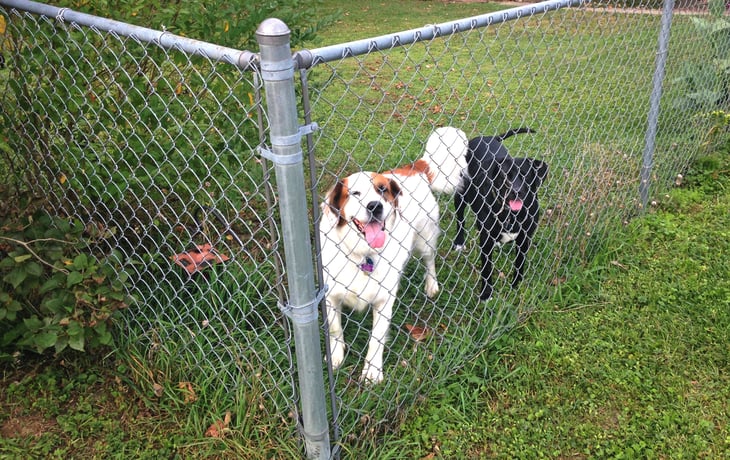
Chain link is an inexpensive fencing material. If you have a large yard that requires lots of fencing, chain link can keep down costs.
However, not all homeowners like the look of chain link. But it can be customized, and some chain link fencing comes with a vinyl coating that adds color to hide the bare metal. You can always paint the fence if you aren’t satisfied with the vinyl color options. You also can weave wooden slats through the chain links or grow flowers and vines along them to beautify and add privacy.
Chain link is an excellent option for dogs that dig. To install a chain-link fence, you need to dig a ditch at least 12 inches deep, which will be hard for your dog to dig under. A drawback is that some dogs can climb over it, but you can always add slats or rollers to discourage escape.
Pros of chain link:
- Inexpensive
- Other animals and people cannot easily get through
- Great for smaller yards
- Minimal maintenance
Cons of chain link:
- Not aesthetically pleasing
- No privacy from neighbors
- Dogs can climb over it
- Will corrode over time
- Not great for all terrain
2. Wood
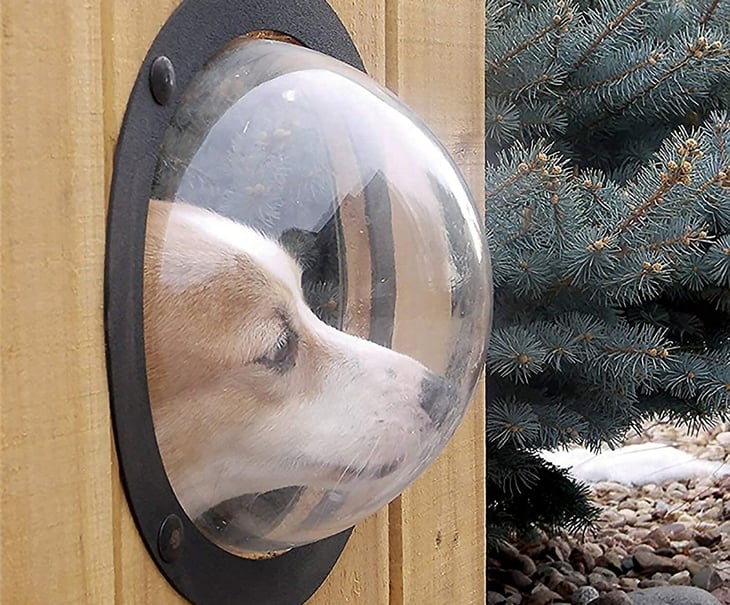
A standard 6-foot privacy fence is tall enough to prevent most dogs from jumping over, and they are unlikely to be able to break through the wood. Privacy fences are good pet fences for small breeds since there is no space between the slats, but they will need continued maintenance since gaps and cracks caused by rot could make it easy for dogs to escape.
Wooden fences keep dangerous animals like coyotes, raccoons, and stray dogs out. However, since they are not buried, dogs can dig underneath and escape. A way to combat this is to install rocks, gravel, hedges, or raised planters at the base of the fence.
Pros of privacy and wood slat fences:
- Offers privacy
- Great for smaller yards
- Keeps dogs contained
- Keeps people and animals out of your yard
- Adds curb appeal
Cons of privacy and wood slat fences:
- Costly
- Labor intensive
- Not great for all terrain
- Dogs can dig under it
- Requires regular maintenance
3. Vinyl
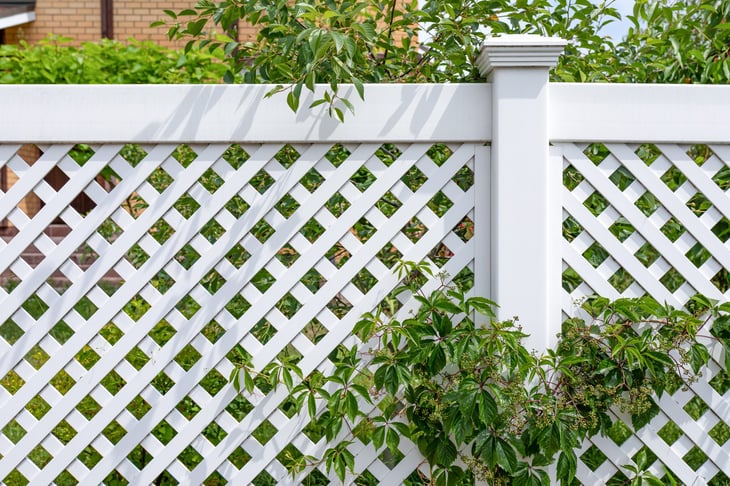
Vinyl fences are durable and are hard to climb thanks to their smooth surfaces. Vinyl will not rot or weaken like wood and are available in 8-foot tall sections to contain dogs who are prone to jumping.
However, vinyl becomes brittle over time, which means a large dog could eventually break through if the vinyl fence is older. Also, since they are not buried, dogs who like to dig will be able to get underneath.
Pros of vinyl:
- Some styles offer privacy
- Keeps dogs contained
- Adds curb appeal
- Customizable
- Inexpensive
- Good for smaller yards
- Keeps people and animals out of your yard
Cons of vinyl:
- Not great for all terrain
- Dogs can dig under the fence
- Can become brittle over time
4. Metal
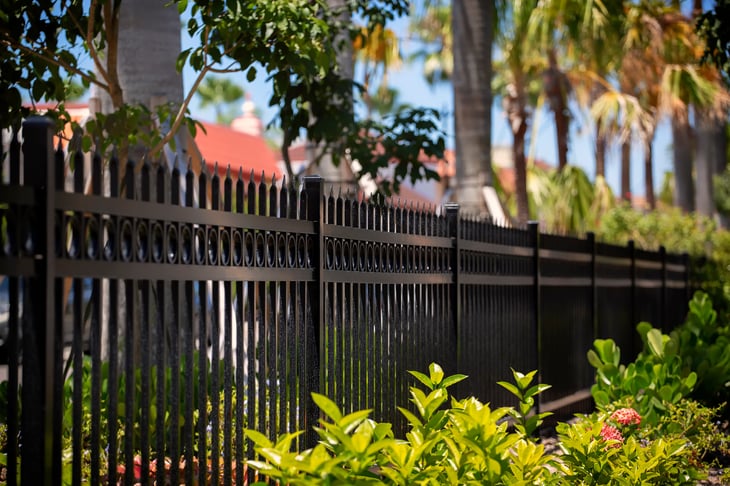
Iron, aluminum, and steel fences are as elegant as they are durable. Bars on metal fences tend to be spaced 3 or 4 inches apart, making them unsuitable for small dogs. However, there is a type of metal fence called “Puppy Picket,” which is great for large and small dogs. A puppy picket is a special addition to an aluminum fence with stakes about a foot high that are more closely placed and prevent dogs from escaping.
Pros of metal:
- Durable
- Available in a wide range of styles
- Adds curb appeal
- Keeps dogs contained
- Other animals and people cannot easily get past the barrier
- Good for smaller yards
Cons:
- Costly
- Labor intensive
- Not great for all terrain
- Regular maintenance required
5. Electric Fence
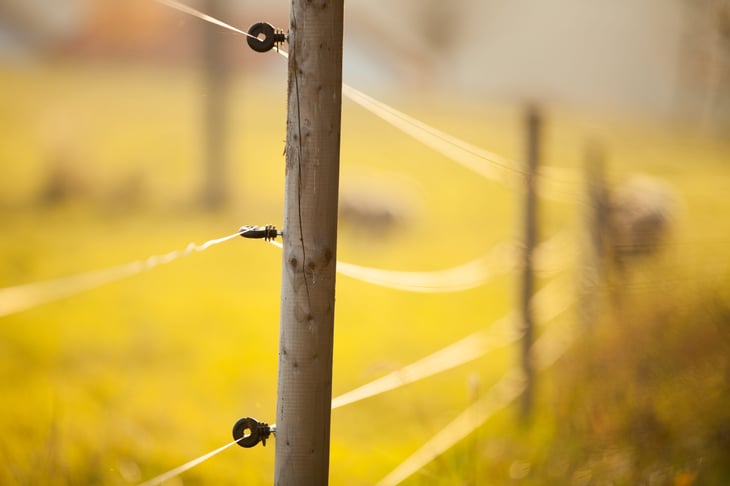
Electric fences, aka wireless dog fence, underground dog fence, and electric fence for dogs, feature wires buried in the ground around your yard. A transmitter emits a radio signal that travels through the wire. The dog wears a receiver on its collar that detects the radio signal.
When the dog approaches the buried wire, it will hear a warning sound. If the dog continues to approach the boundary, it will receive a mild and harmless electric shock.
Pros of electric fences:
- Can be used in small or large yards
- Minimal maintenance
- Keeps dogs of all sizes contained
Cons of electric fences:
- Does not offer privacy
- Does not keep other animals out of your yard
- Costly
- Training involved
- Not great for all terrain
- Dogs can dig it up
- Electric fences do not encourage positive reinforcement and may result in negative behavior changes in your dog
NOTE: Electric fence, dog fence, or pet containment system are generic terms for an in-ground fencing method to keep Spot or Rover in your yard. Invisible Fence is a leading brand name for this type of pet containment system, but there are many affordable options out there.
You might even decide to avoid electric fences altogether because you’d rather your BFF (best furry friend) not receive a static correction every time he or she tries to leave your yard.
A relatively new alternative to electric dog fences? GPS smart dog collars are a non-fencing option to keep your dog in your yard (or in an area you designate when you’re camping or traveling with your dog). Advantages? No digging in your yard to place an electric fence and no maintenance fees – and costing less than those well-known in-ground electric fences.
It’s also important to consider what fences fit your dog’s personality best …
Best Fence for Dogs That Jump
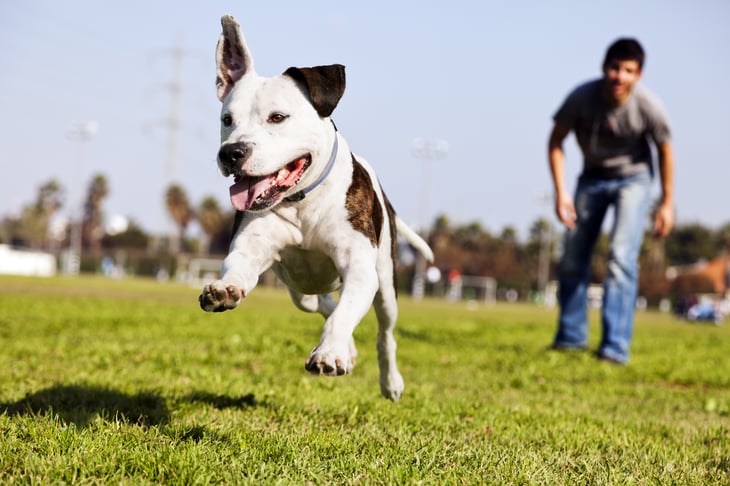
Standard vinyl or wooden privacy fence is tall enough to prevent most dogs from jumping over it. Chain-link and metal fences tend to have pointed tops, which discourages jumping. Rollers can be placed at the top of the fence to thwart more persistent jumpers.
Best Fence for Dogs That Climb
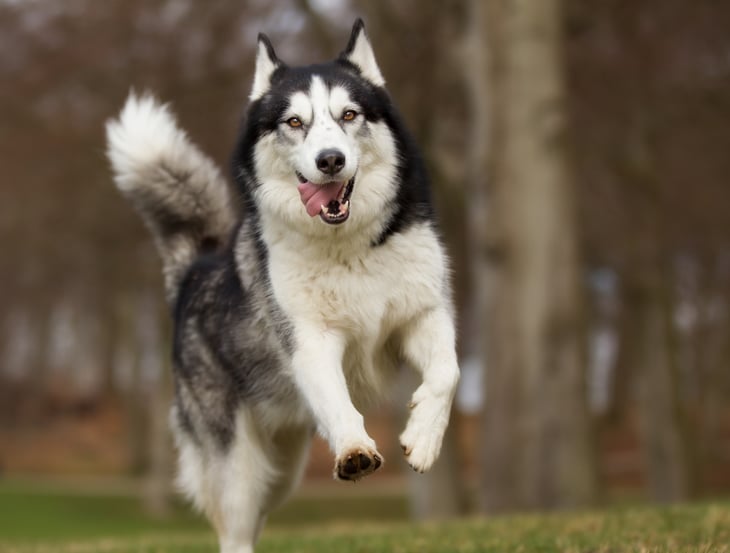
Metal fences, like aluminum, steel, or wrought iron, are difficult to climb. The bars are smooth and vertical, so there’s no place for your dog to get a foothold. Also, since mental fences, especially decorative ones, have ornate, sharp points, your dog is unlikely to be eager to hoist themselves over. Privacy and vinyl fences also have smooth, slick surfaces that are difficult to climb.
Best Fence for Dogs That Dig

Metal and chain-link fences are ideal if you have a pooch that loves to dig since their bases can be buried, making it hard to dig under. Vinyl and wood fences are also a possibility, but since they cannot be buried, they require extra work to deter your four-legged escape artist. You can place rocks, gravel, chicken wire, shrubs, or raised planters to block them from digging directly under the fence.
Best Fence for Aggressive or Excitable Dogs

Since they create a solid barrier the dog cannot see through, wooden or vinyl privacy fences are great for dogs who go wild over squirrels, people, and other dogs. A privacy fence contains and protects your dog and can have a calming effect. If your dog can’t see outside your yard, it focuses on what is happening inside your property lines.
Best Fence for Large Breeds
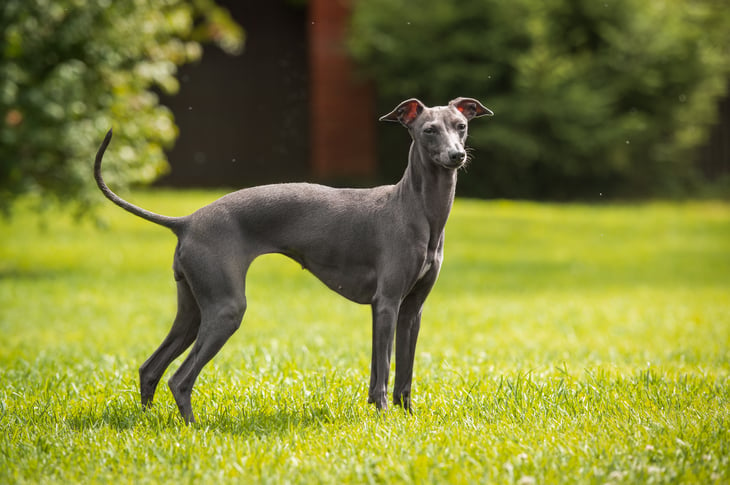
Wooden privacy fences have a lot to offer dog owners because unless your dog is abnormally strong or heavy, they aren’t likely to break through. Metal fences are very strong, so they work for larger breeds. There isn’t a breed of dog out there that could chew through or knock over a metal fence.




Add a Comment
Our Policy: We welcome relevant and respectful comments in order to foster healthy and informative discussions. All other comments may be removed. Comments with links are automatically held for moderation.